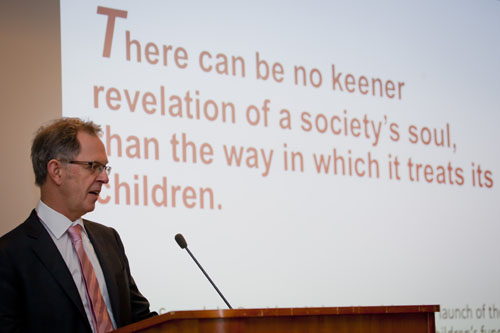
“A nation’s moral economy invests in education for everyone’s good wherever it can, and makes prudent economies that do not harm the quality of teaching and learning whenever it must.” — Andy Hargreaves
In this presidential election, I believe it is critical to vote for the candidate who has the most impactful 21st century vision for education because addressing our issues now is essential for the U.S. to maintain its prosperity and global leadership in the next decades. Matters such as economic strength, innovation, employability, reducing poverty, progress toward racial and gender equality, reducing crime, and building global citizenship are all related to the effectiveness of our education system. Education should not be the privilege of a select few, but the basic civil right of every American child. We must act conclusively to narrow our domestic achievement gap and to narrow our international achievement gap so that our students will be able to compete globally in the next decade. We must invest now in the necessary changes to our education system in order to meet the challenges America will face tomorrow.
Today in The Education Debate 2012, I continue my conversations with distinguished U. S. education leaders about the major issues facing this country by talking with Andy Hargreaves. Hargreaves’ book, The Global Fourth Way: The Quest for Educational Excellence (Corwin Press 2012), co-authored with Dennis Shirley, reveals the key qualities behind the high performance of some of the world’s top educational systems: Singapore, Finland and Canada. His most recent book, Professional Capital: Transforming Teaching in Every School (Teacher’s College Press 2012), co-authored with international reform expert Michael Fullan, sets out a clear vision as to how to achieve high return from all teachers and teaching. Andy Hargreaves is the Thomas More Brennan Chair in Education at Boston College. He studies and advises on high performance in schools and educational systems around the world.
If you were Education Secretary of the United States, what would be your position on the key education issues of our times?
I would follow the principles of best business practice, and work with my team to benchmark the United States against the highest performing systems in the world such as Finland, Canada and Singapore. With open eyes, and no excuses, this would prompt us to determine what we can learn from other high performers that could benefit our own people.

“To increase the human capital of our students, we must invest in the professional capital of our teachers.” — Andy Hargreaves
What should the role of federal government be in K- 12 education? How much more funding should be given to education reform and in what major areas should it be spent?
This nation needs a positive and inspiring educational vision. All of America’s educational system, not just its world-class universities, must be among the best in the world. On the influential international PISA tests of student achievement at age 15, however, the U.S. falls somewhere between 17th and 31st out of 65 countries, depending on the subject being tested. On United Nations measures of child well-being, the U.S. ranks next to last.
All high performing countries make strong investments in their public systems. Their private systems are small or negligible. Charter schools are not a serious option. A nation’s moral economy invests in education for everyone’s good wherever it can, and makes prudent economies that do not harm the quality of teaching and learning whenever it must.
How can this be achieved in America? First, the U.S. can move core funding of public schools away from property taxes, and the inequities they create between districts, towards other forms of taxation. Second, the U.S. can invest in improving the quality of teaching and learning everywhere so that all teachers are able to deal with a wide range of abilities and special educational needs in their own classes with support where necessary. Third, the U.S. can institute a more prudent and cost-effective system of educational testing on the lines described below.
The job of an effective federal system is to inspire the profession and the public, to steer and support schools in a desired direction, to build better partnerships with and interactions among teacher unions, state departments and school districts, and to monitor and make transparent how the system is progressing. It is not to micromanage everything from Washington. Canada has no federal ministry of education. Finland’s National Board of Education consists of less than 20 officials. The district is where all the work gets done. School districts are not only the cornerstones of high performing systems; they are also a foundation of American public democracy. This is not the time to put our school districts up for auction. Now is the time to galvanize them into action.
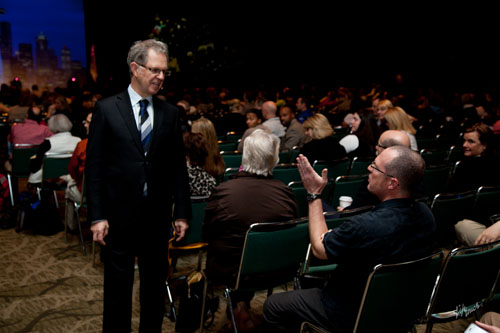
“The U.S. educational system has been colonizing the sinking sands of centralization and standardization that other high performing systems have been leaving behind.” — Andy Hargreaves
What would be your position on improving the teaching profession, including recruitment, teacher training, compensation, and assignment to low income schools?
To increase the human capital of our students, we must invest in the professional capital of our teachers. Top performing countries draw their teachers from the top third of the graduation range, they train them in rigorous university preparation programs where they undertake deep research into their practice, and they have to undergo extensive practice-based experience in schools. We must align teacher preparation practice with that of the highest performing countries. America’s teachers need to be the best. Finns believe that teaching is as difficult as medicine or law, and it is therefore just as hard to enter. Singaporeans say teaching is as challenging as engineering, so they pay teachers a starting salary that is comparable to engineers. America must communicate the same messages about teaching and also back them up.
As Education Secretary, I would ask Teach for America to take on its biggest challenge yet: to lead a national effort in partnership with teachers’ professional associations to improve teacher retention. Fifty percent of public school teachers currently leave teaching within 5 years. In urban schools, they exit within 3. Most of our teachers need to stay in the job until they hit their peak – well beyond 5 years. The best way to do this is by increasing the quality of leadership, support and professional interaction in schools, and by reducing the micromanagement that undermines teachers’ capacity to exercise their judgments as true professionals.
A big part of transforming the teaching profession involves teacher unions. In Canada’s highest performing province — Alberta — over 50 percent of the revenues of the Alberta Teacher’s Association are allocated to professional development. This contrasts with a figure of under 5 percent in most U.S. teachers’ associations. When the California Teachers’ Association took the responsibility to turn around hundreds of the state’s lower performing schools, the result of becoming more obviously engaged with the core work of teaching and learning was a surge in activism among younger members. Our quest should not be to remove or replace teacher unions, but to reform and renew them.
What would be your position on school choice, including charter schools and their expansion, private schools, vouchers, and investment in inadequately staffed and facilitated low income schools?
Parents have a right to choice in education. Charter schools are warranted where they offer something that the public system does not provide locally, where the local public system is inadequate, or where the existing system shows little inclination to innovate and would benefit from an outside push. However, in general, charter schools do not outperform other public schools, they often rob local schools of teacher and student capacity, and most charter schools turn out to be more traditional than the public schools they replaced.
If all our schools were good, as they are in Finland, most parents would choose their local district school. We can do better at turning around low performing schools. High performing systems improve their schools not by having intervention teams descend in from a great height, but by building collective responsibility where strong schools assist weaker neighbors, where resources are disbursed from the district or the state department to schools to make this assistance possible, and where these collaborative efforts run across district boundaries. Charter schools can and should be part of this culture of collective responsibility. Indeed, it can be written into their charters.
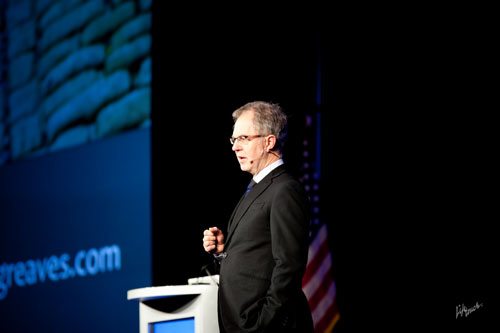
“The U.S. can move core funding of public schools away from property taxes, and the inequities they create between districts, towards other forms of taxation.” — Andy Hargreaves
What would be your strategy to address the domestic and international achievement gaps, including your position on early childhood education, standardized testing, on-line modular education, and teacher/principal accountability?
Most U.S. reforms do the opposite of high performing competitors. These countries understand there is no substitute for strong, high quality teachers who work together to develop good teaching and who exercise shared responsibility for all students in their schools. As the U.S. increases standardized testing from Grade 3 up to Grade 8, Canadians only test Grades 3 and 6 at most, Singapore has just one high-stakes test in Grade 6, and Finland tests samples of students rather than taking a census of all of them. U.S. testing must become more prudent if we are to see improvements in the quality of teaching that avoid teaching to the test, concentrating on students near the cut scores, narrowing the curriculum, eliminating the arts, and rotating teachers and principals in and out of already unstable schools in a constant panic to lift the scores.
Accountability is the remainder that is left once responsibility has been subtracted. But we have put accountability first and created high threat environments that have distorted teaching and learning in a drive to lift up the scores. This can change if we test samples rather than take a census, if we test fewer grades less often, and if teachers become collectively responsible for all students’ success. In the push to narrow achievement gaps, we have inadvertently widened the learning gaps between standardized teaching in highly pressured urban schools and more innovative learning experiences in the affluent suburbs. I would set about narrowing this learning gap.
What would be your position on curriculum reform, including the role of the arts, the treatment of ethics, and the adoption of blended online learning?
China is promoting more school-designed curriculum and innovation. Finland supports all young people to study creative arts until the end of high school. Singapore emphasizes character education because in Singapore, the first priority is to your nation, the second is to your community, and the third is to yourself. Like Singapore’s national education initiative, we need to Teach Less and Learn More: to leave more curriculum time for high quality professionals to exercise the professional flexibility that engages students’ diverse interests and needs in depth. Unfortunately, the U.S. educational system has been colonizing the sinking sands of centralization and standardization that other high performing systems have been leaving behind. If we want more innovative thinking among our students, our teachers must have the opportunity to practice innovative teaching themselves.
Technology is part of the transformation in teaching, but there is no consistent evidence to suggest that online learning options that bypass the teacher are the answer. Like overhead projectors or chalk, digital technologies in the hands of good teachers can be a great asset. In the hands of poor teachers or no teachers, these technologies are just another expensive gimmick.
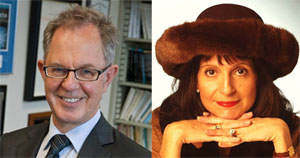
Photos courtesy of Boston College and Andy Hargreaves.
For more articles in The Education Debate 2012 series: The Education Debate 2012 — Howard Gardner, The Education Debate 2012 – Richard Wilson Riley, The Education Debate 2012 — Diane Ravitch , The Education Debate 2012 — Linda Darling-Hammond
In The Global Search for Education, join me and globally renowned thought leaders including Sir Michael Barber (UK), Dr. Michael Block (U.S.), Dr. Leon Botstein (U.S.), Professor Clay Christensen (U.S.), Dr. Linda Darling-Hammond (U.S.), Dr. Madhav Chavan (India), Professor Michael Fullan (Canada), Professor Howard Gardner (U.S.), Professor Andy Hargreaves (U.S.), Professor Yvonne Hellman (The Netherlands), Professor Kristin Helstad (Norway), Jean Hendrickson (U.S.), Professor Rose Hipkins (New Zealand), Professor Cornelia Hoogland (Canada), Mme. Chantal Kaufmann (Belgium), Dr. Eija Kauppinen (Finland), State Secretary Tapio Kosunen (Finland), Professor Dominique Lafontaine (Belgium), Professor Hugh Lauder (UK), Professor Ben Levin (Canada), Lord Ken Macdonald (UK), Professor Barry McGaw (Australia), Shiv Nadar (India), Professor R. Natarajan (India), Dr. Pak Tee Ng (Singapore), Dr. Denise Pope (US), Sridhar Rajagopalan (India), Dr. Diane Ravitch (U.S.), Richard Wilson Riley (U.S.), Sir Ken Robinson (UK), Professor Pasi Sahlberg (Finland), Andreas Schleicher (PISA, OECD), Dr. Anthony Seldon (UK), Dr. David Shaffer (U.S.), Dr. Kirsten Sivesind (Norway), Chancellor Stephen Spahn (U.S.), Yves Theze (Lycee Francais U.S.), Professor Charles Ungerleider (Canada), Professor Tony Wagner (U.S.), Sir David Watson (UK), Professor Dylan Wiliam (UK), Dr. Mark Wormald (UK), Professor Theo Wubbels (The Netherlands), Professor Michael Young (UK), and Professor Minxuan Zhang (China) as they explore the big picture education questions that all nations face today. The Global Search for Education Community Page
C. M. Rubin is the author of two widely read online series for which she received a 2011 Upton Sinclair award, “The Global Search for Education” and “How Will We Read?” She is also the author of three bestselling books, including The Real Alice in Wonderland.


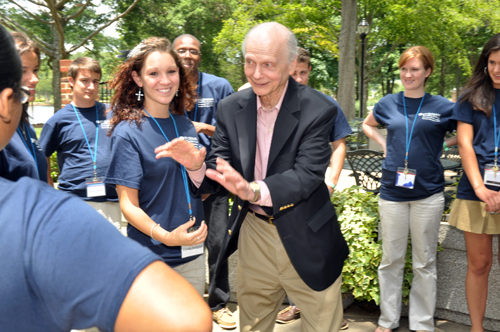
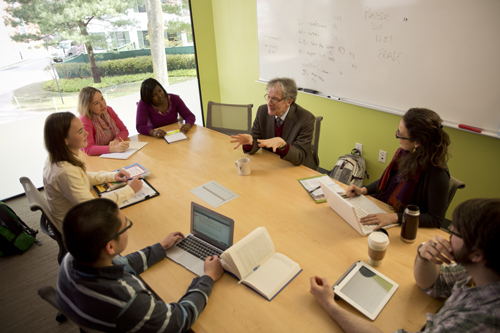
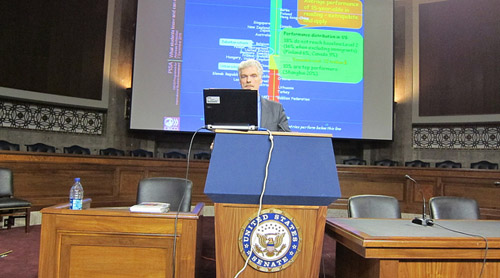
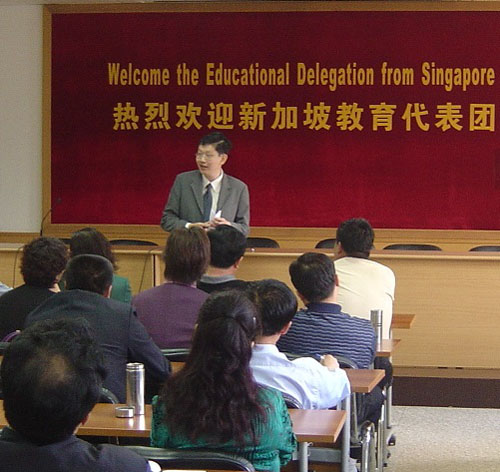
Recent Comments